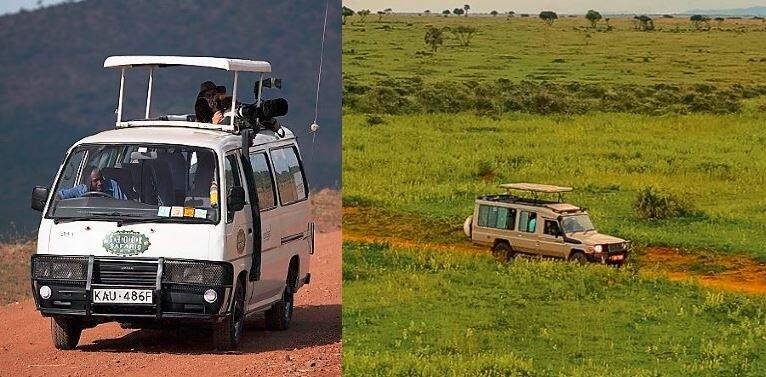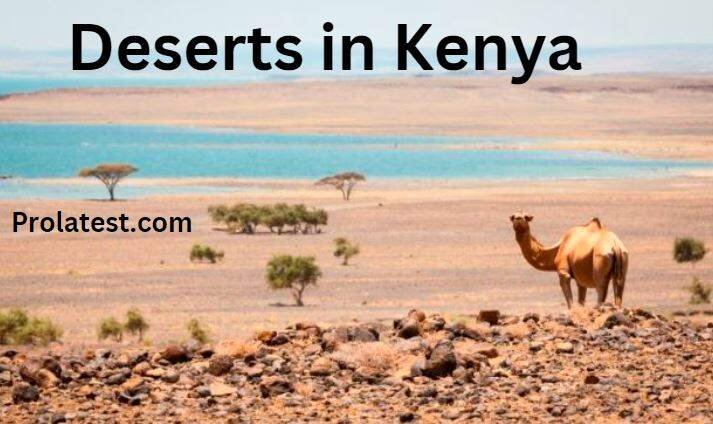Kakamega, or County Number 037, is a Kenyan county in the former Western Province region. Its headquarters are in Kakamega town. Currently, there are 12 sub-counties of Kakamega County.
If you plan to travel to Kakamega for work, settlement, education, business, or vacation, learn about its twelve sub-counties to find the ideal place for you.
This article outlines the twelve sub-counties of Kakamega County. Keep reading to boost your knowledge of Kenyan geography.
The Twelve Sub-counties of Kakamega County
The table below shows the twelve sub-counties within Kakamega County in an ascending order size-wise:
| Name of the Sub-County | Approximated Size in Square Kilometers | Number of Wards |
| Shinyalu | 445.6 | 6 |
| Malava | 423.3 | 7 |
| Lugari | 367 | 6 |
| Likuyani | 301.9 | 5 |
| Matungu | 275.9 | 5 |
| Navakholo | 257.9 | 5 |
| Butere | 210.6 | 5 |
| Mumias West | 165.3 | 4 |
| Lurambi | 161.8 | 6 |
| Khwisero | 145.6 | 4 |
| Ikolomani | 143.6 | 4 |
| Mumias East | 135.5 | 3 |
A Description of Each Sub-County
1. Shinyalu
The Shinyalu Sub-county has an estimated land space of 445.6 square kilometers. It is the largest sub-county in Kakamega, with an estimated population of over one hundred and fifty-nine thousand in 2015. Shinyalu has six wards, namely:
- Isukha North
- Murhanda
- Isukha West
- Isukha Central
- Isukha East
- Isukha South
The largest ward in Shinyalu Sub-county is Isukha East, covering a whopping 262.6 square kilometers. Surprisingly, this ward had the smallest population density of 17,939 in 2015.
The most densely populated ward back then was Isukha South (around 38.8 square kilometers). Isukha West boasts the smallest land area of about 23.6 square kilometers.
Also Read: The Crying Stone In Kenya: Location, Charges, And Why It Cries
2. Malava
The Malava sub-county covers an estimated area of 423.3 square kilometers. It has the following wards:
- Chemuche
- West Kabaras
- Manda-Shivanga
- East Kabaras
- Butali or Chegulo
- South Kabaras
- Shirugu-Mugai
The Malava sub-county sheltered over two hundred and five thousand people in 2015. South Kabaras had the highest population while West Kabaras had the smallest according to the statistics on the County Government website.
3. Lugari
The third largest sub-county in Kakamega County is Lugari. Occupying approximately 367 square kilometers, Lugari has only six wards. These include:
- Lugari
- Mautuma
- Lwandeti
- Chekalini
- Lumakanda
- Chevaywa
The biggest ward is Mautuma, which covers approximately 83.8 square kilometers. Lugari, the ward that shares a name with the sub-county, is approximately 81.3 square kilometers. Lwandeti covers 44.2 square kilometers of land, making it the smallest.
Chekalini(41.7 square kilometers) had the lowest human settlement while Chevaywa(57 square kilometers) was the most densely populated ward in 2015.
4. Likuyani
Here is another sub-county in Kakamega County with an estimated population density of over one hundred and twenty-five thousand. Covering 301.9 square kilometers, Likuyani has only five wards, including:
- Likuyani
- Sango
- Nzoia
- Sinoko
- Kongoni
The largest ward, Likuyani, covers 19.2 square kilometers of land. Sinoko is the smallest ward, with a land space of 50.1 square kilometers. It had the smallest population in 2015. Nzoia had the biggest population in 2015.
5. Matungu
Matungu Sub-county is approximately 275.9 square kilometers large. It had a population of 146,563 in 2015. Matungu has five wards, including:
- Koyonzo
- Kholera
- Namamali
- Mayoni
- Khalaba
The largest ward, Koyonzo, is around 66.9 square kilometers big. It was the most densely populated ward in 2015. Kholera, Khalaba, Mayoni, and Namamali wards are about 61.9, 39, 49.8, and 58.3 square kilometers respectively.
6. Navakholo
This sub-county covers an approximated land space of 257.9 square kilometers. It has five wards, including:
- Bunyala Central
- Bunyala East
- Bunyala West
- Ingotse-Matiha
- Shinoyi-Shikomari-Esumeiya
The Navakholo Sub-county had over one hundred and thirty-seven people in 2015. The ward with the highest population back then was Bunyala West (73.3 square kilometers). Ingotse-matcha had the lowest population, and it is about 34.4 square kilometers large.
7. Butere
The next of the twelve sub-counties in Kakamega County is Butere. This is where the Marama Luhya sub-tribe lives. The five wards in Butere Sub-county include:
- Marama Central
- Marama West
- Marama North
- Marenyo-Shianda
- Marama South
The sub-county covers approximately 210.6 square kilometers. It had an estimated population of over one hundred and thirty-nine in 2015. Butere’s largest ward is Marama Central. It is about 61.0 square kilometers.
It had the largest population size in 2015. The Marenyo-Shianda Ward is the smallest, covering 31.9 square kilometers.
8. Mumias West
Mumias West Sub-County of Kakamega County is approximately 165.3 square kilometers large. Its population was more than one hundred and eleven thousand in 2015. Mumias West is made up of four wards, including:
- Mumias Central
- Enteje
- Mumias North
- Musanda
Etenje is the largest ward in Mumias West Sub-county, covering about 50.6 square kilometers. However, Mumias Central, 33.6 square kilometers, had the highest population of 37,214 in 2015.
It is also the smallest ward in this sub-county. Mumias North and Musanda are 35.7 and 45.4 square kilometers respectively.
9. Lurambi
Another of the twelve sub-counties in Kakamega County is Lurambi. The sub-county has six wards, including:
- Mahiakalo
- Butsotso East
- Shirere
- Butsotso Central
- Shieywe
- Butsotso South
The entire Lurambi sub-county covers an approximate land space of 161.8 square kilometers. The Butsotso ward occupies the largest area of about 48.8 square kilometers.
However, Shieywe, one of the smallest wards (about 17.9 square kilometers), was the most densely populated ward in 2015.
10. Khwisero
Another one of the smallest sub-counties in Kakamega is Khwisero. It is approximately 145.6 square kilometers. Its population was over one hundred and two thousand in 2015.
The Khwisero Sub-county has the following wards:
- Kisa North
- Kisa Central
- Kisa East
- Kisa West
Kisa West (28.7 square kilometers) and Kisa Central (53.7 square kilometers) are the smallest and largest wards respectively. Kisa North (31.5 square kilometers) had the smallest estimated population density in 2015. Kisa Central had the highest number of occupants.
11. Ikolomani
The Ikolomani sub-county has an estimated population of above one hundred and four thousand. Ikolomani is about 143.6 square kilometers large. It has the following sub-counties:
- Idakho South
- Idakho Central
- Idakho North
- Idakho East
Idakho North is the largest ward, covering around 40.6 square kilometers. Idakho South is the smallest, occupying 24 square kilometers. It had the lowest population density in 2015.
Idakho Central (39.6 square kilometers) had the highest population in the Ikolomani Sub-county in 2015.
12. Mumias East
Mumias East Sub-county of Kakamega County occupies about 135.5 square kilometers of land. It had a population of over one hundred thousand back in 2015. Mumias East Sub-county consists of three wards, including:
- Lusheya-Lubinu
- East Wanga
- Malaha-Isongo-Makunga
The largest of the three wards is Lusheya-lubinu_ about 57 square kilometers. It sheltered the highest number of people in 2015. East Wanga and Malaha-Isongo-Makunga measure about 35.1 and 43.4 square kilometers respectively.
Crucial Information About Kakamega County
The following information about Kakamega County can help anyone planning a trip to the region:
- Kakamega Town: The town is the entryway to the county. It hosts the county’s headquarters. Kakamega is one of the fastest-growing towns in Kenya in terms of housing and infrastructure.
- Accommodation: Kakamega County boasts some of the most affordable guesthouses for those traveling on a shoestring budget. It also has luxury hotels, resorts, and lodges for financially stable travelers.
- Best Tourist Attraction: Kakamega has spectacular landscapes and unique tourist landmarks. The best is the Kakamega Forest, a tropical forest covering over 200 square kilometers. Offering up to 380 species of birds, the Kakamega Forest is ideal for bird watching. It also has a variety of monkeys and nature trails for hikers.
- Cultural Heritage: Traveling to Kakamega can give you an instant chance to study Luhya’s cultural practices and traditions. You might encounter the Isukuti drummers among other traditional instrument players and dancers during the Khayega Cultural Festival.
- Local Cuisine: Luhya people are among the best cooks in Kenya. They occupy one of the most fertile land parcels in the country. Their most delicious food is ‘Obusuma,’ commonly called Ugali. They serve it with a spicy chicken stew called ‘isisikoli.’ The Luhyas also eat Ugali with delicious vegetables and meat.







